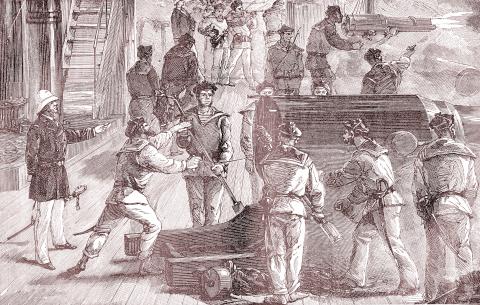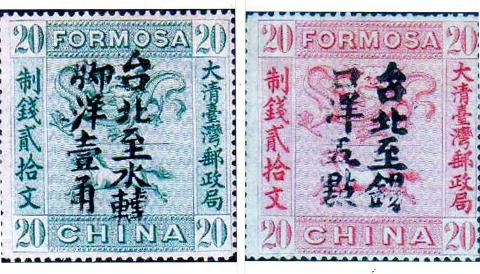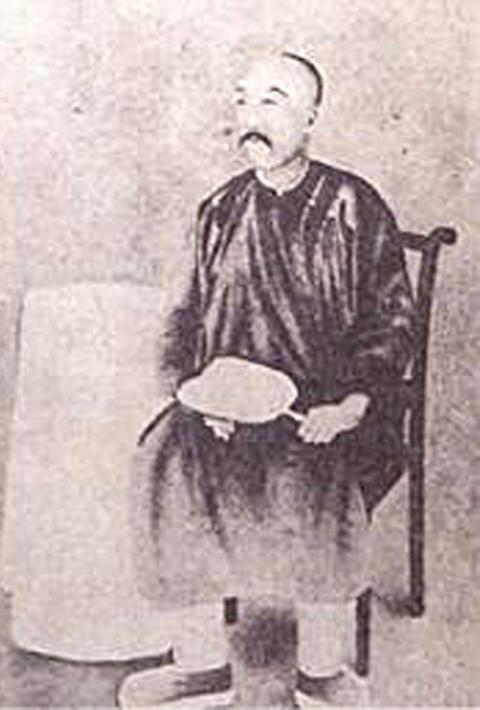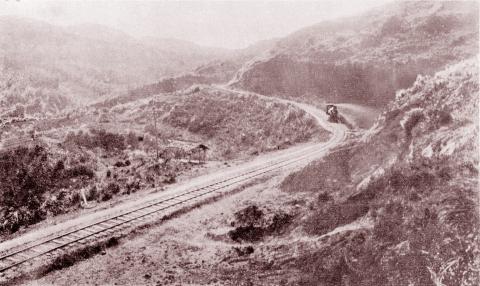Taiwan in Time: Oct. 12 to Oct. 18
The war between France and Qing Dynasty-ruled China, which began in Dec. 1883 over control of northern Vietnam, spilled into Taiwan in Oct. 1884, when the French captured the northern port city of Keelung.
A few months earlier, the Qing government had appointed Liu Ming-chuan (劉銘傳) as imperial commissioner for the defense of Taiwan, which the French had been eyeing for its strategic importance.

Photo courtesy of Wikimedia Commons
Born into a poor farming family, Liu quickly rose through the Qing ranks as a military leader during the suppression of the Taiping Rebellion.
A month after Liu arrived in Taiwan, the French attacked Keelung, but Liu’s forces kept the enemy from landing. The French broke through Liu’s defenses during the subsequent October invasion and Liu was forced to retreat to Taipei.
According to official information from Longshan Temple, after hearing that Liu had planned to abandon Taipei and head further south, local elders gathered at the temple and wrote a petition to Liu stamped with the temple seal and also sent people to close the gates leading south. Liu finally relented and with the help of civilian troops, was able to hold on to Taipei.

Photo: Lin Liang-che, Taipei Times
Another version, according to JW Davidson’s 1903 book, The Island of Formosa, Past and Present, claims that an angry mob attacked Liu’s party and locked him in the temple until he agreed to defend Taipei.
Sun Kaihua (孫開華) was able to repulse French forces invading Tamsui a week later, confining the enemy to Keelung. After a few months of minor skirmishes, it was cholera and typhus outbreaks that eventually reduced the French forces in half. Unable to advance, the French were still able to enforce a naval blockade of Tamsui, Tainan and Kaohsiung.
Lieutenant Colonel Jacques Duchesne assumed command in January 1885 with reinforcements, and the French scored a few more victories, finally reaching the Keelung River. Meanwhile, Admiral Ameedee Courbet successfully occupied the Penghu (澎湖) islands.

Photo courtesy of Wikimedia Commons
Yet, Duchesne’s troops weren’t strong enough to continue, Liu’s troops stood their ground and the battle reached a stalemate. No more major operations were carried out from either side for the rest of the war.
Peace talks began in April, and the French lifted the blockade while the Chinese began their withdrawal from Tonkin. On June 9, the Treaty of Tianjin (天津條約) was signed, effectively recognizing French control over Vietnam and establishing trade rules, border demarcation plans and other commercial stipulations. The ninth article mandated French withdrawal from Keelung and Penghu.
French troops stayed in Keelung until June 22 to ensure Chinese withdrawal from Vietnam. Duchesne was reportedly the last one to board the departing ships headed to Penghu, which would remain in French hands for another month.

Photo courtesy of Wikimedia Commons
The Qing had claimed Taiwan as part of its empire since 1693, but considered it a remote backwater territory and paid it little attention until 1874, when the Japanese successfully invaded Taiwan in what would be known as the Mudan Incident (牡丹社事件).
After the French incident, the Qing fully realized the strategic importance of keeping Taiwan under its control. On Oct 12, 1885, the imperial court decided to separate Taiwan from Fujian as its 20th province, with Liu as provincial governor.
Liu is remembered locally as a progressive administrator who made great strides to modernize Taiwan, but it’s also said that his “opening up the mountains and pacifying the Aboriginals” (開山撫番) campaign was overly oppressive with frequent use of force. His achievements include bolstering Taiwan’s defenses, setting up electric streetlights, establishing a postal system and also setting up a Western-style school. Taiwan’s first railroad project was initiated in 1887 under his watch, eventually linking Keelung and Hsinchu by 1893.
Qing Dynasty development of Taiwan was short-lived, as Liu resigned in 1891 due to “health reasons” and returned to China at age 56. Four years later, the Qing ceded Taiwan to Japan.
Taiwan in Time, a column about Taiwan’s history that is published every Sunday, spotlights important or interesting events around the nation that have anniversaries this week.

The canonical shot of an East Asian city is a night skyline studded with towering apartment and office buildings, bright with neon and plastic signage, a landscape of energy and modernity. Another classic image is the same city seen from above, in which identical apartment towers march across the city, spilling out over nearby geography, like stylized soldiers colonizing new territory in a board game. Densely populated dynamic conurbations of money, technological innovation and convenience, it is hard to see the cities of East Asia as what they truly are: necropolises. Why is this? The East Asian development model, with

June 16 to June 22 The following flyer appeared on the streets of Hsinchu on June 12, 1895: “Taipei has already fallen to the Japanese barbarians, who have brought great misery to our land and people. We heard that the Japanese occupiers will tax our gardens, our houses, our bodies, and even our chickens, dogs, cows and pigs. They wear their hair wild, carve their teeth, tattoo their foreheads, wear strange clothes and speak a strange language. How can we be ruled by such people?” Posted by civilian militia leader Wu Tang-hsing (吳湯興), it was a call to arms to retake

This is a deeply unsettling period in Taiwan. Uncertainties are everywhere while everyone waits for a small army of other shoes to drop on nearly every front. During challenging times, interesting political changes can happen, yet all three major political parties are beset with scandals, strife and self-inflicted wounds. As the ruling party, the Democratic Progressive Party (DPP) is held accountable for not only the challenges to the party, but also the nation. Taiwan is geopolitically and economically under threat. Domestically, the administration is under siege by the opposition-controlled legislature and growing discontent with what opponents characterize as arrogant, autocratic

When Lisa, 20, laces into her ultra-high heels for her shift at a strip club in Ukraine’s Kharkiv, she knows that aside from dancing, she will have to comfort traumatized soldiers. Since Russia’s 2022 invasion, exhausted troops are the main clientele of the Flash Dancers club in the center of the northeastern city, just 20 kilometers from Russian forces. For some customers, it provides an “escape” from the war, said Valerya Zavatska — a 25-year-old law graduate who runs the club with her mother, an ex-dancer. But many are not there just for the show. They “want to talk about what hurts,” she